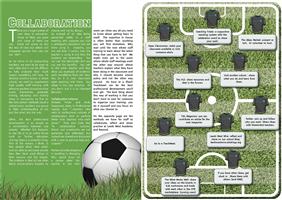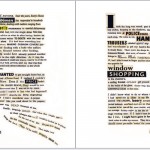Weekly coaching observations are an important part of teacher development in our school- my colleague Emma Hickey has written about her experience of being coached here. These are obviously designed to help the teachers being coached but I am increasingly finding that coaching others helps my own development.
Upping my game
My teaching isn’t bad at all, but when I see another teacher doing something I don’t do or something I don’t do well enough, possibilities suddenly open up. On Friday I watched a History lesson where the teacher expertly used paired work, group work and hot-seating, things that are less common in my classroom but which worked brilliantly in his. On Wednesday and Friday I saw amazing-but contrasting- examples of in-class interventions from Maths and MFL teachers. I love when I see something that challenges me to be better- this post from Andrew Warner captures this joy of seeing a great lesson.
The process of giving advice often forces me to reflect on my own teaching. Sometimes when I suggest a way to improve, I could almost be giving myself the same advice. It can be easier to spot an area for development in someone else than notice it about your own teaching.
Improving the quality of CPD
It’s tough to get CPD right, but the more lessons that I see, particularly outside my own subject area, the more confident I am in designing sessions that are useful for everyone, and not just a few. There is generic advice around teaching which doesn’t apply to every subject so seeing lessons and discussing the nuances with others helps me to deliver better training. I have an English teacher’s approach to marking, not a music teacher’s. I have five lessons a week with year 10, not one. Every lesson is a chance for me to learn how another teacher’s experience differs from my own.
I can also see the impact of CPD. I don’t mean checking up and holding people to account, because that is far removed from how coaching should be. I mean whether it is effective enough. Largely, when we introduce something new, or suggest a way of doing things, teachers will do it. That’s a massive responsibility and if something that we say doesn’t work, or isn’t actually helpful, then it is good to see that and do something about it. It works the other way around too- I can see where our CPD has been very effective and then share examples of good practice.
Thinking deeply about teaching
I have more ‘lighbulb moments’ in other people’s lessons than my own. Sometimes, seeing several lessons across a week allows me to think about a particular aspect of teaching in a more than theoretical way. One of my favourite posts, The Space Between the Question and the Answer, was conceived in this way. I had been contemplating questioning and wait time then saw how various teachers went about this and the effect in their classrooms. Sometimes a single moment in a lesson will lead to a massive shift in understanding.
Seeing students in a different light
In one of my coaching observations I see a Maths class made up of many of the students that I teach. It’s fascinating to see a different dynamic at play. Much like when a student sees you in Asda and it blows their mind, seeing students you teach in a different context is an eye-opener. The quiet student who comes to life; the one whose behaviour is much better than it is in your lesson; the hidden world of student behaviours that you miss when you are not looking.
Making me more open to feedback
I am confident in my own teaching but there is a danger that confidence becomes arrogance, and arrogance becomes resistance to feedback. I’ve definitely been there. The culture that we have at DKA- and my own role as a coach- has helped me relish the feedback I receive. When I coach others, I don’t judge or look for problems, I just look for what might be the simplest way to improve. I know that my coach is thinking this too, so it helps me to relax. Each week my coach makes my brain hurt a little with her questions, which is exactly the way I want it.
I would recommend that all teachers get into other classrooms, even for five minutes a week. Those five minutes could make all the difference.

























